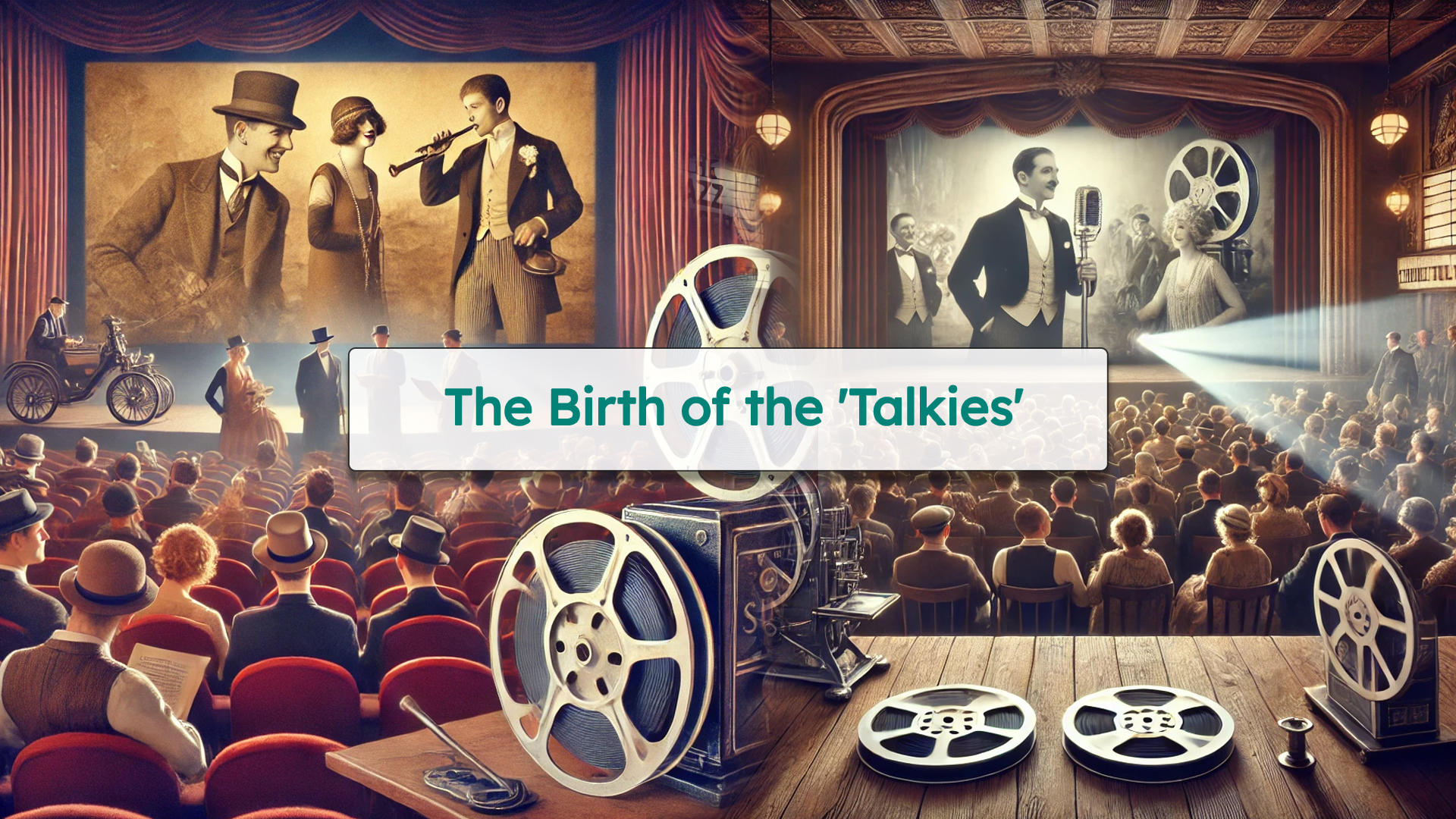The transition from silent films to sound films, commonly known as the birth of the ‘talkies,’ marked a revolutionary moment in the history of cinema. Before the introduction of synchronized sound, movies relied on visual storytelling, title cards, and live music accompaniments to convey emotions and narratives. However, with technological advancements in the late 1920s, the film industry witnessed a seismic shift that forever changed the way audiences experienced movies.
Early Efforts to Synchronize Sound
Efforts to integrate sound into motion pictures date back to the late 19th and early 20th centuries. Inventors like Thomas Edison experimented with synchronized sound through devices like the Kinetophone, but these early attempts were plagued by synchronization issues and technological limitations. Various filmmakers and engineers sought ways to marry audio with moving images, but it wasn’t until the 1920s that viable solutions began to emerge.
The Breakthrough: Warner Bros. and Vitaphone
One of the most significant breakthroughs in sound cinema came from Warner Bros. and their use of the Vitaphone system. Developed by Western Electric and Bell Telephone Laboratories, Vitaphone was a sound-on-disc technology that synchronized recorded dialogue and music with the projected film. This innovation paved the way for the release of The Jazz Singer (1927), starring Al Jolson. Although largely a silent film, The Jazz Singer featured synchronized singing and a few spoken lines, making it the first commercially successful talkie. The film’s success proved that audiences craved synchronized sound, pushing Hollywood toward full-scale adoption of sound technology.
The Rise of Sound-on-Film Technology
While Vitaphone was an important milestone, it had limitations, such as difficulty maintaining synchronization between film and audio discs. Soon, sound-on-film technology, which recorded audio directly onto film strips, gained traction. The Movie tone system, developed by Fox Film Corporation, and RCA Photophone quickly became the industry standard due to their efficiency and ease of use. By the early 1930s, nearly all major Hollywood studios had embraced sound-on-film, ensuring that talkies became the new norm.
Challenges and Industry Adaptation
The transition to sound was not without challenges. Filmmakers and actors accustomed to silent cinema had to adjust to the new medium. Many silent film stars struggled with the demands of spoken dialogue, and some saw their careers decline. Additionally, film studios had to retrofit theatres with sound equipment, a costly and time-consuming process. Directors also had to rethink cinematography techniques, as early sound equipment was bulky and restricted camera movement.
Despite these hurdles, the film industry adapted quickly, and by the early 1930s, silent films had become virtually obsolete. Dialogue-driven storytelling, musical scores, and sound effects became essential components of cinema, enriching the audience’s experience.
Legacy of the Talkies
The introduction of sound revolutionized filmmaking and laid the foundation for modern cinema. It allowed for more complex storytelling, deeper character development, and greater emotional impact. The transition also led to the rise of new genres, such as musicals and dialogue-heavy dramas, shaping the future of Hollywood.
Today, sound is an indispensable element of filmmaking, from immersive surround sound systems to intricate sound design in modern blockbusters. The birth of the talkies remains one of the most transformative moments in cinematic history, proving that innovation and technology continue to redefine the way we experience films.


